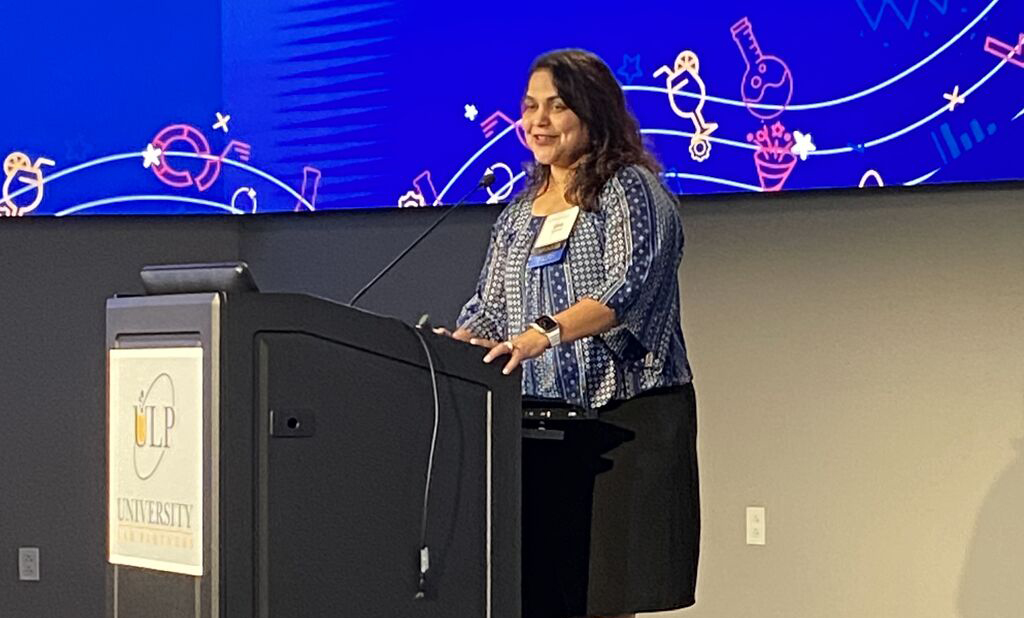Building Ecosystems and Inspiring Leaders in Cell and Gene Therapy.
By Sofia Prado-Irwin, PhD

Dr. Uma Lakshmipathy is an acclaimed scientist and strategist with 20+ years of experience in cell biology, stem cells, translational research and cell therapy. A leader in research and development, Dr. Lakshmipathy has honed her outstanding operational and organizational skills, leading high-performing teams in an intense work environment. She has a proven track record of translating innovative emerging technologies into successful portfolios of products and services.
Orange County Bio spoke with Dr. Lakshmipathy about her experience as a scientist and leader in cell and gene therapy (CGT) and her vision of the industry now and in the future.
The Interview
Orange County Bio (OCB): As a leader in CGT, what is your vision for the future of cell therapies? How does leadership play into that vision?
Uma Lakshmipathy (UL): The vision for the future for cell therapy is application to broader indications and equitable access.
As for leadership, First, intensely collaborate. Second, to create an ecosystem of innovation with a broad set of expertise, tools, and solutions.
The problems that exist in cell therapy are not easily solvable. If they were, we would have already solved them by now! To solve difficult challenges, we need to seek expertise across different fields and bring different disciplines together.
It’s exciting – there’s a lot of learning to do.
OCB: What drives you? What gets you out of bed in the morning?
I love puzzles and I love people. It’s amazing to work with people to solve puzzles that will have an impact.
UL: I’m a problem solver. I love puzzles and I love people. It’s amazing to work with people to solve puzzles that will have an impact.
The whole biotech field is built with dreamers. But a dream without action is just a dream. True leadership is in not just believing that your vision is achievable but finding ways to get there.
OCB: How do you balance innovation and growth with compliance?
UL: This field is not for the weak-hearted! You need risk tolerance and a lot of resilience in the face of failure, disappointments and setbacks. You need a startup mindset. You’re walking in the dark, and creating new paths.
Not everything is going to be a success. But you don’t know unless you try.

Dr. Uma Lakshmipathy talks about her journey as a women in science at the Science STEM event at University Lab Partners, UC Irvine CA.
OCB: How do you balance the demand for scientific advancement and clinical applications with business and the necessity for economic benefit?
UL: I keep going back to the word ecosystem. If that means partnering with nonprofit organizations or philanthropic societies, that needs to happen. That’s the biggest challenge we have right now. How do we bring these therapies to market and make them profitable, equitable and sustainable in the long run?
OCB: Does CGT require a unique type of leadership compared to other industries?
UL: One hundred percent. Everything we say and do, we’re creating a market, we’re creating awareness. We have to infuse excitement about CGT into society.
We also have a responsibility to educate the public. Educate financial institutions so they are more assured of investing. Educate the patient and their family.
There has always been a high sense of responsibility for people on the cutting edge of science. Go big or go home, right? That is part of the baggage we carry. And we’re creating that wave to make it smoother for the next generation.
OCB: As a scientist, do you take a different approach to leadership compared to a leader with a business background?
UL: I think so. If you’re part of the biotech industry, the science needs to lead to value creation. That’s the business we are in. I know the expertise I bring to the table, but I also need to work with commercial leaders who understand. It’s a partnership, with science and business working hand in hand.
OCB: How do you develop new leaders? How do you instill vision and strength into your team?
UL: Everything starts with a vision. What is our end goal? What keeps you going, even when you experience failures?
Innovation partnerhips! Connect with nonprofits, industry organizations, and universities that connect you with patients. Patient stories inspire providing us a motivating vision.
Mentor and inspire people in your organization or in others. Support them so they don’t give up when they hit the first challenge or failure.
OCB: What legacy do you aspire to leave in the cell and gene therapy industry?
By creating more leaders, your legacy lives on and you keep the field moving forward.
UL: I want to be a leader creator! By creating more leaders, your legacy lives on and you keep the field moving forward. The footprint I want to leave is the leaders I create, and the impact I have is in their success. If you focus on the people, the rest happens automatically.
I benefited from the energy and inspiration of so many others, so I feel compelled to pay it forward. I want to infuse the same level of energy, trust, belief, and enthusiasm that I was afforded. You take all this inspiration around you, and then you give it back. You pass it on.
OCB: What advice do you have for emerging leaders in the field?
UL: The hardest thing is to look at the big picture but also execute at the minute level. If you can develop a sense of zooming in and zooming out, and you can get the big picture but also operate at the small level, that’s great.
OCB: Would you like to share any final thoughts on leadership in GCT?
UL: When I look at the big leaders in the field, they just have drive, and the relentless pursuit of what they believe in. That’s what it takes. It’s decades of work. You dream big and you pursue it relentlessly.
The most difficult problems do not have overnight solutions. They require thinking outside the box. They require partnership of all sorts. And they require energy. That is what any industry needs to grow.
In reflection
Leadership in the cell and gene therapy (CGT) field is not for the faint-hearted—it requires passion, resilience, and a collaborative mindset. Dr. Uma Lakshmipathy emphasizes the importance of building ecosystems that bring together diverse expertise to solve complex challenges. She highlights the critical role of partnerships across industries, nonprofits, and patients to ensure therapies are both impactful and sustainable. Above all, leadership in CGT is about inspiring others, creating new leaders, and leaving a legacy of innovation and progress. Solving the toughest problems requires perseverance, visionary thinking, and the drive to turn dreams into actionable realities.
